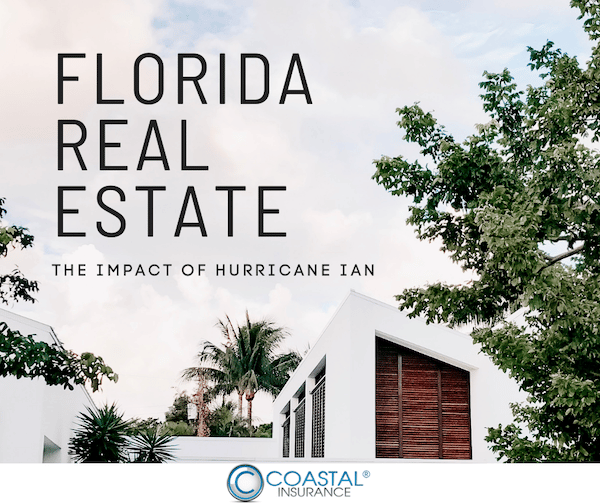Compare Prices & Start Saving Today!
Common Homeowners Insurance Discounts
New Homes may enjoy discounts up to 14%.
Security Systems such as deadbolt locks, simple alarm systems, and smoke detectors may reap discounts from 1-5%. Sophisticated monitoring services and integrated sprinkler systems may reduce your premiums as much as 20%.
Combined Policies: If you combine your automobile and homeowner policy with the same carrier you may obtain discounts from 5% to 15%.
Carrier Longevity: If you maintain your coverage with the same carrier for a number of years they will usually reward you with a discount.
Retired Homeowner: On average stays home longer and may be rewarded with a 5% discount.
Non-smoker: Some carriers reward non-smokers a 5% discount.
Verified Google Reviews
Staten Island NY Homeowners Insurance
Coastal Insurance Solutions is the expert in home insurance protection in Staten Island, New York. Connected to more than 30 insurance organizations permits us to offer you the most aggressive rate by weighing the whole market in one simple step. We will send you up to 10 FREE recommendations for review and guide you to which organization we prescribe in light of price, rating and our own particular case involvement with that organization. We know the emotional and financial investment included in owning a home and our devotion to securing you and your family’s benefits is our #1 priority.
Request your free quote to get the best accessible value or call us to talk with our authorized, knowledgeable staff.
Get 10 FREE QUOTES from Top-Rated Insurance Companies
Homeowners Insurance Basic Coverages
Coverage A: Dwelling
Dwelling coverage covers the cost of rebuilding the house itself using like materials. This coverage also includes any permanent attachments, including central air conditioning equipment, heating and plumbing equipment, and similar attached items.
Coverage B: Other Structures
Fences, pools, gazebos, sheds, and other structures that are not attached to your home are covered by Coverage B, other structures coverage. The value of this coverage is usually set to 10% of the dwelling coverage amount but can be changed to a higher coverage amount if needed.
Coverage C: Personal Property
Personal belongings are described as personal property on your home insurance policy. This coverage would include common household items like televisions, furniture, clothing, and other common belongings. Personal property coverage is usually assigned a value of at least 50% of the dwelling coverage on a homeowners insurance policy, but this coverage amount can often be adjusted.
Many homeowners insurance policies cover personal property on an actual cash value basis. What this means is that if your personal property is lost, damaged, or destroyed in a covered claim, your insurer will pay a depreciated value based on wear and tear due to age. Some insurers provide an option for personal property coverage at replacement cost value, which covers your personal property for the full cost of replacement, typically for a slightly higher premium.
Certain types of items, such as jewelry, firearms, furs, and similar items have limited coverage on a homeowners insurance policy. These items can be added to your policy as an endorsement to insure them to their full value.
Coverage D: Additional Living Expenses
If a covered claim forces you out of your home temporarily while your home is being repaired, additional living expenses are covered by Coverage D. This can include the cost of hotels or of eating out and this coverage is designed to cover the difference between your normal living expenses and the higher temporary expenses you experience due to a claim. Typically, Coverage D is equal to 20% of the coverage amount for Coverage A, dwelling coverage.
Coverage E: Personal Liability
Coverage E, commonly known as personal liability coverage, protects you against lawsuits for bodily injury to others or damage to the property of others due to negligence. Coverage amounts typically start at $100,000, although most policies provide $300,000 of coverage or higher. Personal liability coverage on your home insurance also pays for your legal defense, which can be a sizable expense in itself.
Common risks include dog bites and slip and fall accidents, but accidental damage to the property of others is also covered.
Households with pools or children who have friends who visit your home may wish to consider a higher coverage amount. This coverage is available for all family members in the household.
Coverage F: Medical Payments
Your home insurance policy also provides coverage for small injuries to others that don’t involve a lawsuit. Accidents can happen, but many accidents are minor, only requiring basic medical attention.
Get 10 FREE QUOTES from Top-Rated Insurance Companies
All Risk vs. Named Peril
A homeowners insurance policy can be either an all-risk policy or a named peril policy, with the difference between the two being which risks to your home are covered by the policy. As its name suggests, an all-risk policy is more inclusive, providing coverage for almost all risks to your home except for specifically excluded risks.
A named peril homeowners insurance policy only provides coverage for the home that is specifically named as coverage items on your policy. Named peril policies also have specific exclusions to coverage while also excluding any risks that are not specifically named as covered perils.
Covered personal property perils may differ from those covered for the dwelling, depending on the type of policy. The five types of policies for single-family homes are HO-1, HO-2, HO-3, HO-3 with HO-15, and HO-8.
HO-1 Basic Homeowner
A basic homeowners insurance policy, sometimes called an HO-1 policy, provides coverage for fire and lightning, as well as wind and hail damage — but being a basic insurance policy, omits coverage for several other risks to homes. Due to consumer demand for broader coverage, this type of policy is not commonly available from insurers.
HO-2 Broad Basic Homeowner
An HO-2 homeowners insurance policy expands upon the coverage provided by an HO-1 policy by adding some additional perils to the coverage for the dwelling: falling objects, roof collapse due to the weight of ice or snow, building collapse, water damage due to bursting pipes or sudden leaks, frozen pipes, and damage from electrical surges.
HO-3 Special Extended Homeowner
Currently the most popular type of homeowners insurance policy, an HO-3 policy provides all-risk coverage for your dwelling while providing coverage for 18 named perils for your personal property. All of the coverages provided by an HO-2 policy apply to personal property on an HO-3 policy. Covered perils for the dwelling itself are limited only by named exclusions.
HO-3 with HO-15 Comprehensive
This type of policy does not limit coverage for personal property to named perils, instead of covering both your home and personal belongings for all perils except for those specifically excluded from your policy. Depending on the insurer, a similar type of comprehensive coverage may also be available through an HO-5 policy.
HO-8 Modified Homeowner
Coverage for historic homes is often provided through an HO-8 homeowners insurance policy, which provides limited coverage similar to an HO-1 policy but is designed to cover homes that may cost significantly more to rebuild than their market value.
Homeowner Insurance Tips Video
Get 10 FREE QUOTES from Top-Rated Insurance Companies
History Of Staten Island
Out of all the five boroughs the most southern borough is Staten Island, in fact Staten Island is the most Southern location in the state of New York. Staten Island is only a ferry ride away from Manhattan and the ferry ride is free! The ferry is packed with the beautiful sights of New York City while crossing the New York Harbor. While Staten Island is the sole borough that is not apart of the New York City subway system you can drive to and from Brooklyn by way of the Verrazano-Narrows Bridge.
On the northern part of Staten Island is a town called St.George. The town is lined with large historic victorian houses and is the home of a 630 foot ferris wheel called The New York Wheel. Directly on the promenade in St. George is also the National Lighthouse Museum, committed to educating people about the chronicles of lighthouses and their keepers.
On the southern end of the island is a home built in 1680 called the Conference House. The home was where the Staten Island Peace conference was hosted. Although the attempt for an end and peace in 1977 during the American Revolutionary War was unsuccessful the home still stands as a national and New York City landmark.
Staten Island is brimming with parks, historic landmarks, beaches, and museums, there is never a dull moment there for the local homeowners or vacationers. Just one quick visit to Staten Island and you can see the excitement and beauty the town has to offer on a daily basis. That is why Staten Island is one of the most beloved summer vacation spots for people in Manhattan and on Long Island.









![IBA Top Retail Brokers 2024 Medal[88] IBA's Top Retail Broker 2023](https://coastalinsurancesolution.com/wp-content/uploads/2024/07/IBA-Top-Retail-Brokers-2024-Medal88.png)



